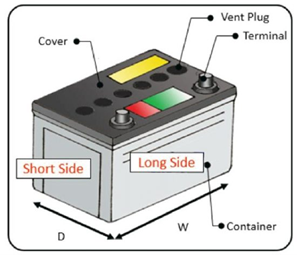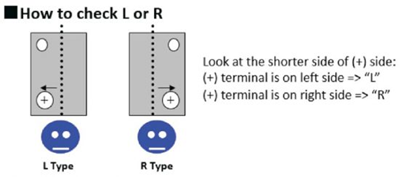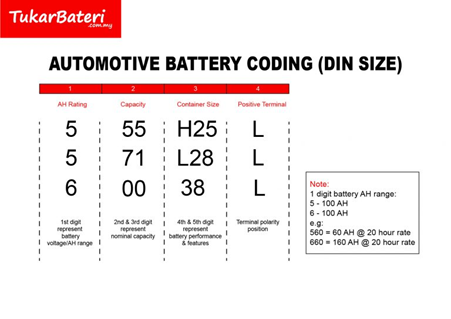Due to the many options available, selecting the correct battery for your vehicle is crucial. The right choice is essential to avoid frequent battery replacements or to ensure your vehicle’s electronic accessories function efficiently. The best battery for your car or truck is the one specified for your vehicle model.
Car batteries come in various sizes, so selecting one that matches your vehicle’s specifications is crucial. So, how do we determine which battery type and size are suitable for your car?
Ways to find car battery size that fits your car
- Check the owner’s manual book. It will directly tell you the correct group size for your car.
- Inspect your current old battery in the hood if you can’t find the manual
- Refer to the internet. By entering your car’s year, make, and model, it will show you all the battery options
- The easiest way is just to call us at 011-1608 1608. We will help to figure it out for you!
Factors to determine battery is compatible for your vehicle's electrical system
- Group Size: Ensure the battery matches the group size specified for your vehicle. This information can be found in your car’s manual or on the existing battery. Group size determines the physical dimensions, terminal types, and type requirements for the battery.
- Cold Cranking Amps (CCA): This measures the battery’s ability to start the engine in cold temperatures. A battery with a higher CCA rating is better suited for cold climates or if you frequently start your car in cold weather.
- Reserve Capacity (RC): RC indicates the battery’s ability to run electrical systems when the alternator is not charging. A battery with a higher RC can support more electrical accessories and systems when the alternator fails.
- Driving Habits: Your typical driving habits, such as the number of accessories you use and the distance you travel, can influence the battery’s capacity and reserve capacity requirements. A higher and reserve capacity battery may be necessary if you frequently run multiple accessories or make short trips.
- Climate Considerations: The local climate affects battery performance. In colder regions, a battery with higher CCA ratings is essential, while in hot climates, a battery with good heat resistance and higher RC values is preferred.
Components of car battery

JIS Code – Japanese Industrial Standard – Used for Korean and Japanese car brands
- Old JIS code: NS40, NS60, NS70
- New JIS code: 40B19L/46B19L (NS40), 55B24L/60B24L/65B24L (NS60), 85B26L (NS70)
DIN Code – Deutsches Institutfür Normung – Used for continental cars from Europe
So now, how do we know how to read and differentiate car battery size?
How to read JIS (Japan Industries Standard) battery size

| Code | Detail |
| 55 | Performance Ranking – The larger the number, the larger the performance ranking |
| B | Depth size of car battery size A = Small H = Big |
| 24 | Container size – measured in CM |
| R/L | Car battery terminal position R = Right L = Left |
| Car Battery Dimension | Width(mm) | Height(mm) |
| A | 162 | 127 |
| B | 203 | 127 or 129 |
| C | 207 | 135 |
| D | 204 | 173 |
| E | 213 | 176 |
| F | 213 | 182 |
| G | 213 | 222 |
| H | 220 | 278 |

How to read DIN battery size

Conclusion
In conclusion, car batteries are crucial components of vehicles, serving as the power source for starting the engine and running the electrical systems. They operate based on electrochemical reactions, converting stored chemical energy into electrical energy. The average lifespan of a car battery typically ranges from 3 to 5 years, but with proper maintenance and care, it can be extended. Factors such as climate, driving habits, and the quality of the battery itself significantly influence its lifespan. Advancements in battery technology and the development of high-quality batteries offer the potential for extended lifespans, making it possible for a car battery to last up to 10 years with the right care and maintenance. Regular inspections, cleaning of terminals, and ensuring proper charging are essential practices to maximize the battery’s performance and longevity.


